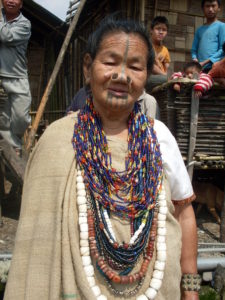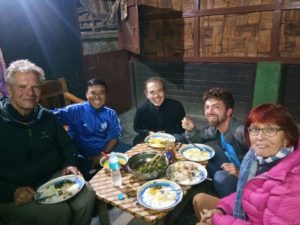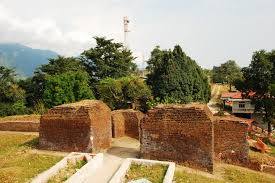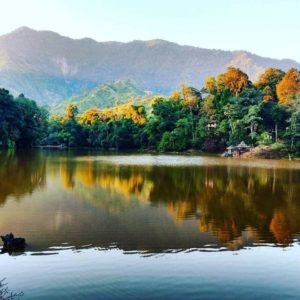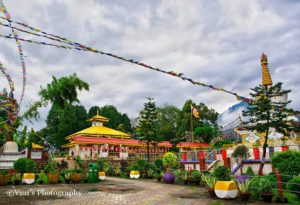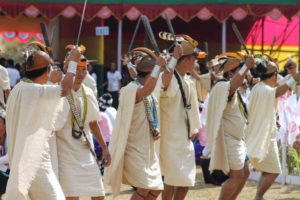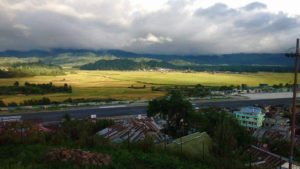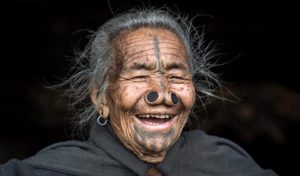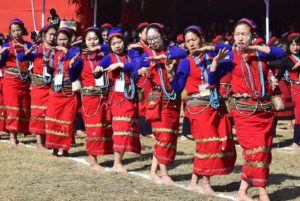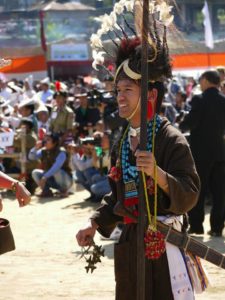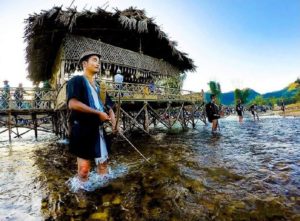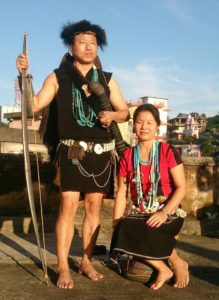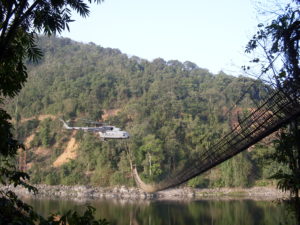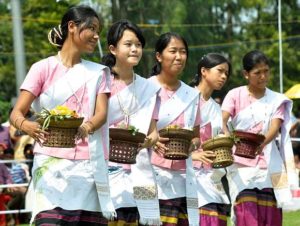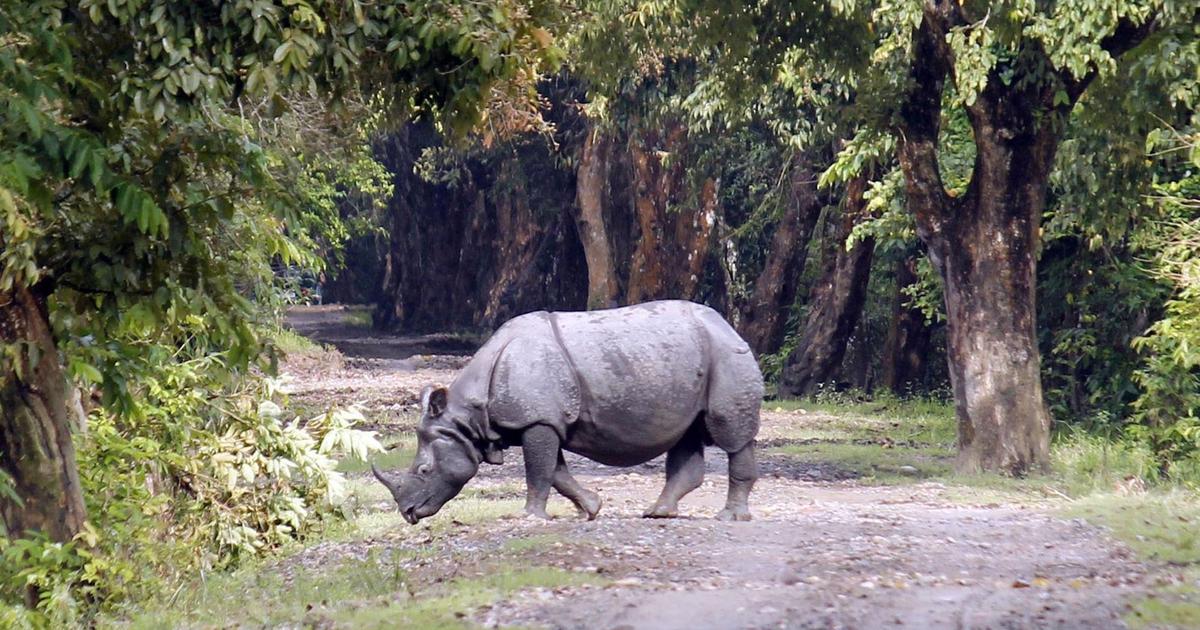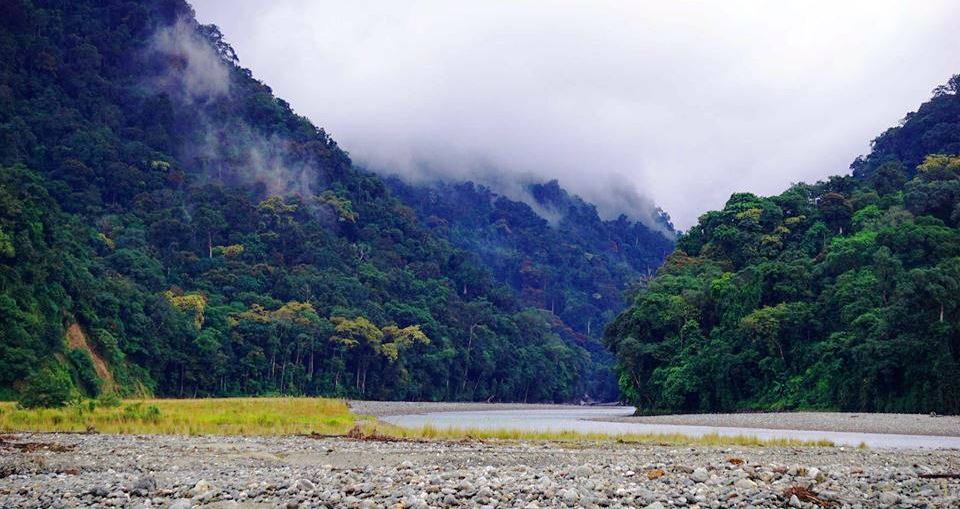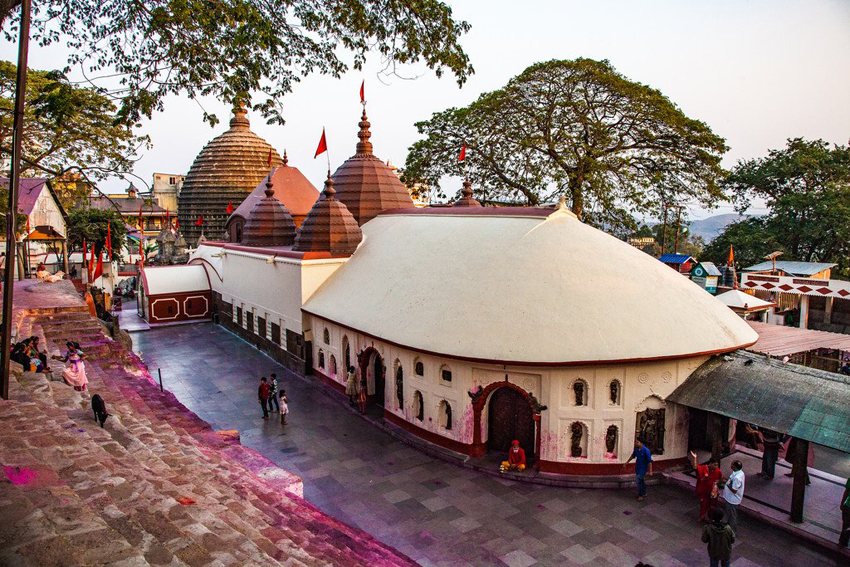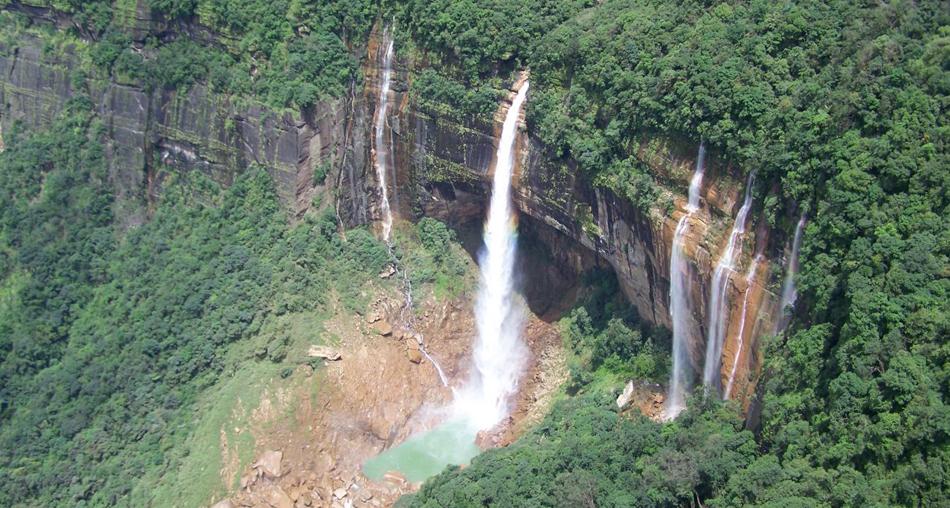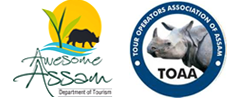Tour Highlight
- Galo Tribal Man
This specially designed itinerary will take you to the densely forested valleys of Central Arunachal Pradesh formed by the mighty Siang and Subansiri rivers where some of India’s most interesting tribal communities lead a lifestyle which is beyond imagination for most of the outer world.
- Apatani woman in Ziro
Meet The Apatani People and Open A Doorway Into The Lives Of One Of India’s Most Fascinating Tribes.
- Nyshi Man
Our Experience guide will take you to the villages of some of little known tribes like Nyshi, Galo, Tagin and Adi who live a sustainable and simple lifestyle which is very close to the nature.
- Homestay in Ziro
Spend couple of nights in the warm hospitality provided by the hosts of the homestay and taste the mouth watering local dishes
Itineraries
Day 01: Arrive Guwahati / Tezpur (185 kms, 4 hrs drive)
Arrive Guwahati by flight.
Meeting upon arrival and depart for Tezpur.
Tezpur: Modern day Tezpur, the headquarter of Sonitpur district of Assam is said to be erstwhile Sonitpur, the Kingdom of legendary King Banasura. According to the legend when Lord Krishna’s army and Banasura’s army fought for the rescue of Aniruddha (grandson of Lord Krishna) who married Banasura’s daughter ‘Usha’ against the will of her father there was so much bloodshed that the whole place was stained in red. This prompted to the name of the place becoming Tezpur (means the City of Blood). Modern Tezpur was founded by the British colonial administration in 1835 as the headquarters of Darrang.
Arrive Tezpur and check in at hotel.
Afternoon visit:
Agnigarh: According to the legend the site of the fortress was built by Banasura to keep his daughter Usha in isolation. The name ‘Agnigarh’ has been derived from two Sanskrit words ‘Agni’ (meaning fire) and ‘garh’ (meaning fortress or wall). It is a hill on the banks of the Brahmaputra river and one of the big tourist attractions in Tezpur. The view of river Brahmaputra the Kolia Bhomora Setu bridge(named after the Ahom general Kolia Bhomora) is really eye catching.
Rest of the time free at leisure
Overnight at hotel.
Day 02: Tezpur / Itanagar (216 Kms, 5 hrs drive)
Morning after breakfast depart for Itanagar.
En route visit the local Nyshi villages to get in touch with the traditions and the customs of the ethnic people.
Itanagar: The Capital of Arunachal Pradesh, Itanagar is situated at the foothills of Himalayas. The name Itanagar is derived from the historical Ita-fort (Ita meaning brick) which dates back between 14th and 16th century. The major tribe in Itanagar is the Nishies. Situated on the top of the hills the city offers a very pleasant climate. The Capital city is being divided into two zones by 10 kms Stretch. The other part is known as Naharlagun. It became the Capital of Arunachal Pradesh on 20th April 1974.
Arrive Itanagar and check in at hotel.
Overnight at hotel.
Day 03: Itanagar
Morning after breakfast city tour visiting:
- Ita Fort Itanagar
Ita fort: The historical Itafort situated in the middle of the town. It is an fort of irregular shape built with more than 8 million pieces of bricks. The fort has been built during Jitari Dynasty which dates back to 1360 to 1550 A.D.
- Ganga lake
Ganga Lake: Situated in the foothills of the Himalays the lake is locally known as Gekar Sinyi (confined water)
- Buddha Monastery in Itanagar
Buddhist Temple: The Buddhist Temple is a set within the premise of magnificent gardens located atop on a hill. The yellow roof of the temple displays a Tibetan touch along with a stupa established in front of the shrine. A tree planted by Dalai Lama beside this beautiful temple reflects his holy presence over the entire place.
One can also visit Jawaharlal Nehru State Museum, Craft Centre, Emporium, Donyi –Polo Centre for hearing impaired etc.
- Nyshi men in traditional dress
Late afternoon visit the Nyshi tribal village to witness the daily lifestyles of the Nyshi people.
Overnight at hotel.
Day 04: Itanagar / Ziro (170 kms, 4 hrs drive)
Morning after breakfast drive to Ziro by the same vehicle.
En route visit the Nyshi village near Sagalee.
Ziro, a small picturesque town situated at an altitude of 5000 feet with Pine and Bamboo groves, villages, a craft centre and high altitude Tarin Fish Farm is an ideal place for relaxation. Ziro is a huge rice valley surrounded by mountains with the circuit house perched on a hillock in the middle of the town. Local lore suggests, at one time, Ziro seemed like the farther outpost for the Indian Army in the 1960s. Hewnce the name that suggests remoteness, rather a final frontier. Considered to be a virtual Shangri La, Ziro earned a UNESCO World Heritage tag forthe unique culture of its people, the Apatanis
- The Picturesque Ziro Valley
Arrive Ziro and check in at hotel.
Overnight at hotel.
Day 05: Ziro
Morning after breakfast visit Tarin, the high altitude fish farm, a famous whispering pine grove and the craft center. From a hill top, catch the first rays of dawn lighting up the stunning emerald patchwork quilt of nature.
Later explore the Apatanis:
- Apatani Woman
The Apatani is one of the main tribes in Arunachal Pradesh. The Apatanis mainly residing in the Ziro region of Central Arunachal Pradesh grow rice by terrace farming and their indigenous irrigation system is unique amongst the Arunachal tribals. As a real nature lover, for every tree they fell, five fresh saplings are planted.
Apatani Villages: Hong village is the largest village in the Apatani plateo. There are more than 10000 people living in 700 houses at Hong village. Hong, Hari, Hija, Duta, Bula, Tajang, Bamin Michi and Mudang Tage are eight distinctive Apatani villages situated at Ziro Valley. In every village, there are some male community halls called ‘Lapang’. The Apatani village comprises of long rows of houses with a fertility totem in front of each house. They use an indigenous herbal salt that’s rice in iodine which is quite unique.
Apatani people are famous for tattoo on their forehead and nose plug. Basically, Apatani people are animists who worship all natural gods. Dony-Polo, i.e, the Sun and the Moonis their supreme god. Apatani people are known for paddy cum pisciculture. The Apatani women are very skilled in handicraft and handloom as one can be see from the wonderfull JIKHE pattern, woven jackets and intricately patterned JILANG shawls. The men are expert in metallurgy and bamboo craft.
They celebrate Myoko Festival in the month of March for the welfare of their community and dree festival in July for bountiful harvest, community wellbeing and to keep away the pest.
Later visit:
- Shiva Lingam in Ziro
Shiva Limgam: The calm hills of Kardo hold one of the largest shiva linga with a height measuring 25 feet and 22 feet in circumference. The Shiva linga excavated in the recent past is located near the Hapoli Town.
District Museum: The district museum at Ziro exhibits a variety of handicrafts and textiles, musical instruments, weapons of the past ages used by different tribesand sub-tribes of Arunachal Pradesh. It displays an exclusive collection of art and craft, jewellery, variety of tribal headgears etc reflecting the traditions of ancient tribal culture.
Overnight at hotel.
Day 06: Ziro / Daporizo (170 kms, 5 hrs drive)
Morning after an early breakfast drive to Daporizo.
Daporizo: Daporizo is a district headquarter of Upper Subansiri District. It is a beautiful place on the right bank of Subansiri river with picturesque villages and also to see are the caves(a few kms away). Languages spoken here are Tagin, Hill Miri, Adi(Gallong), Hindi, Assamese and English.
Arrive Daporizo and check in at hotel.
Later visit:
- Tagin Women
Shikarizo Village: The inhabitant of this village are tagin and hill miri tribal people. Tagin tribe is regarded to be the migrants of Penji, a village in Tibbet. They are believed to be the descendents of the Abotani. The Tagins are the supporters of Dony-Polo, whereas the Naa and Mra (two groups of Tagin) are strong followers of Tibbetan Buddhism. Si-Dony is an important festival of this tribe celebrated to honour the earth and Sun.
Overnight at hotel.
Day 07: Daporizo / Along (180 kms, 4 hrs drive)
Morning after an early breakfast depart for Along by car.
Along: Along the headquarter of West Siang district of Arunachal Pradesh located at an altitude of 300 m from the sea level. Sitting amidst abundant natural surroundings, Along in Arunachal Pradesh is a small town with beautiful villages. Along Arunachal Pradesh is a most ideal place to spend the hot summer seasons. The picturesque surroundings laced with brilliant plantations makes Along in Arunachal one of the most perfect health resorts of India.
Arrive Along and check in at hotel.
Afternoon visit:
- Adi Man
Pangin Village: The inhabitants of the Pangin village are Adi Minyong tribal people. Minyong, Padam and Passi are sub tribes of Adi. They practice both tarrace farming and shifting cultivation. Solang is the main festival of Adi tribe celebrated during the first week of September every year. Adi people have a community hall called Dere where children of different age groupgather to learn about social norms from elderly citizens.
Rest of the time free at leisure.
Overnight at hotel.
Day 08: Along
Morning after breakfast visit the Adi village in Boleng.
Later visit:
- Dony Polo Temple Along
Dony Polo Temple: Established in 1972, Dony Polo Temple at Aalo (Aalong), is a religious centre of the followers of the Dony Polo religion. Out of 400 community centres of Arunachal Pradesh, it is designated to be the only worshipping centre of the Dony Polo religion in the entire state. The religion possesses no written scriptures. The rituals and the traditions have been orally passed from the ancestors to the next generations. There is a belief among the Dony Polo animist of a common lineage of the people of Arunachal Pradesh as the descendents of Abotani. The rituals of this religion includes invoking of the spirit and nature along with holy sacrifices to the spirits. The Dony Polo Temple acts as the centre of worshipping objects of nature, the Sun and the Moon. The temple premise consists of a community hall, a meditation room and a prayer hall.
- Galo tribesmen
Kabu village: The inhabitants of the Kabu village are Galo tribal people. Both monogamy and polygamy are prevalent in this tribe following a patriarchal system of society. The base of economy of this tribe is agriculture. Initially shifting cultivation was practised by Galo people, but at present wet rice and tarrace cultivation dominates the agricultural scenario. Even though Galo language is spoken by 95 % of their total population, people also speak Assamese, Hindi and English language.
- An Adi couple
Padam Village in Damro and the Hanging Bridge: The best place to get a glimpse of traditional Adi life is the Padam village in Damro. Derived from the tribe name Padam and Aro, meaning “real or original”, Damro is the original village or fontainhead from where Padams dispersed across Arunachal Pradesh..
- Hanging bridge in Along
The Hanging bridge on the river Yamne is another thing to see at Damro. This bridge is local made of cane and bamboo. The bridge is around 60 to 70 m long connecting to the others hill tribes, fishing are the sports for these tribe.
- Confluence of Siang and Siyom river
Confluence of Siang and Siyom: The spectacular look into the scenic beauty of confluence of two rivers – Siang and Siyom is worth watching. The source of Siang river is Talung Tso Lake in South Western Part of Tibet. This trans boundary river is named as yarlung Tsangpo in Tibet, Siang in Arunachal Pradesh, Brahmaputra in Assam and Jamuna in Banglagesh.
Overnight at hotel.
Day 09: Along / Pasighat (130 kms, 4 hrs drive)
Morning after breakfast drive to Pasighat.
Pasighat: The district headquarter of East Siang district, the oldest administrative center of erstwhile NEFA, situated on the bank of mighty river Siang, the main tributary of Brahmaputra and bounded by snow-clad peaks, rocky mountains, virgin floral and faunal diversity. This region is the home of the Adi tribe who are remembered for their colourful Ponung dance.
Arrive Pasighat and check in at hotel.
Later visit:
Kekar Monying (Black Rock): It is one of the important memorials of the State eracected in memory of Adis who fought with the british at this site on 4 th December 1911 and who died a heroic death.
Komsing: The British had eracected the epitaph/ memorial stone of Sir Neol Williamson killed by Narmi Manmur Jamoh.
If time permits visit
Dr. Daying Ering Wildlife Sanctuary: A rich habitant of many unique plants, birds and wild animals such as hog deer, hispid, hare, Bengal lioricans, raptors and migratory water birds.
Overnight at hotel.
Day 10: Pasighat / Dibrugarh (110 kms, 4 hrs drive)
Morning after breakfast depart for Dibrugarh. En route cross the Brahmaputra river by the newest bridge in the Brahmaptra at Bogibeel.
Arrive Dibrugarh and check in at the hotel.
Evening free at leisure.
Overnight at hotel.
Day 11: Dibrugarh / Tai Phakial / Dibrugarh (85 kms one way, 2 hrs drive)
Morning after breakfast drive to Tai Phakial Village.
- Tai Phake Women
Thai Phakial – (The Tai words ‘Pha’ meaning wall and ‘Ke’ meaning ancient or old.) The Phake is also known as the Phakial, they had migrated from Thailand to Assam in 18th centuary, they speak Thai language. Even during the modern time they still follow their traditional culture. The have a fine tradition to keep their family record, the name of the record is Ho Likboi, generally the elder of the family known as the Pathek is well versed prepare the record. They practice Buddhism, there is a Buddhist monetary in Namphake village established in 1850 the monks in the monasteries is known as CHOW MOUN . They also have the sound knowledge in Pali language. The residence claim to be 100% literate. One interesting fact is that the villager claims the police had never entered the premises as because the Monks settled the disputes among the villagers, they also rely on Herbal cure. They marry within there community only but there is no restriction if someone wants to marry from outside. They are basically patriarchal society the son inherits the fathers property. Though few in number and in spite of an identity crisis, the Tai Phakes have been able to maintain their glorious legacy.
Later visit a Sonowal Kachari Village.
The Sonowal Kacharies: Even before the advent of the British in Assam, the Sonowal Kacharies had been living at Haldibari of upper Majuli. They are known to be the Tibetan-Burmese branch of the Mongoloids of the Bodo origin. When the Ahom invaded Assam, the Kacharies put up a brave fight against them. Due to continue battles, some of them were force to leave their original place living and settled in a scattered way here and there. Thus the Bodo, the Mess, the Hajong, the Rabha, the Dimasha, the Lulong, the Thalang and Sonowal etd. came into existence of the Kacharies. The term Kachari is very difficult to trace. It is assumed that during the reign of Ahom King some of the Kacharis were engaged in washing gold particles from the sands of river and therefore the prefix Sonowal” was added to signify them. According to an anecdote the kacharis of upper assam who became the disciple of Gossain named Kachaideo were considered to have super natural powers of offering a certain quantity of gold in a bamboo tube while the Ahom king Gadadhar singa was on the throne. and these people came to be known as Sonowal Kacharis. The sonowals were offered non tribal titles like Hazarika, saikia , Bora in their process of assimilation with the non tribal people, specially during Ahom Rule.
Later return to hote in Dibrugarh.
Overnight at hotel.
Day 12: Depart Dibrugarh
Morning after breakfast in time transfer to Dibrugarh Airport or railway station for onward destination.
Tour ends.
Inclusion and Exclusion
THE PACKAGE COST INCLUDES:
- All transport by a dedicated vehicle
- Accommodation for 11 nights.
- Daily breakfast at hotel.
- Permits required for entering into Arunachal Pradesh (Indian & Foreign Nationals)
- All parking, toll charges, driver’s allowances etc.
- 5 % GST as applicable
THE PACKAGE COST DOES NOT INCLUDE:
- Any meals other than mentioned above.
- Entrances to the monuments, parks other than mentioned above.
- Charges of the accompanying guide or local guide (if required)
- Any expenses occur due to natural calamities or which are not mentioned in the cost inclusions
- Any other expenses of personal nature i.e camera, laundry, telephone, any type of insurances, tips, portages etc.





